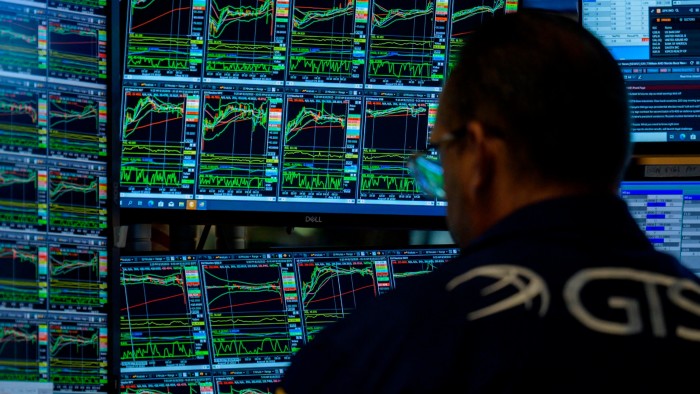Why passive investing makes less sense in the current environment


Roula Khalaf, Editor of the FT, selects her favourite stories in this weekly newsletter.
The writer is president of Queens’ College, Cambridge, and an adviser to Allianz and Gramercy
Should the vehicles that investors choose to place their money be a function of the investing environment? This question is not asked often enough by investment committees, which tend to focus on asset allocation issues, model portfolios and manager selection.
Yet it is a question that has become a lot more important for generating high risk-adjusted returns, particularly given the massive shift of money from active to passive investment strategies in recent years.
A simplified illustration of why this is the case comes from my student days. Armed with a Eurail-type pass, I travelled the European continent and, like many others, took advantage of the fixed menu offered by restaurants. They were diversified, low priced and did not require much local knowledge to choose from a long list of dishes. In short, it was a good way to fill my stomach and keep expenses down.
I suspect that I would have behaved differently had the digestion-related risks of these menus been greater and more variable. In such a world, I would have placed much greater importance on menu differentiation; and I would have equipped myself with a better understanding of local ingredients and dishes. More active management of my meals would have become a priority, including a more educated approach to individual menu selection.
Having opted in mass for the fixed-menu approach, investors now need to pay more attention to individual security selection given ongoing shifts in the investing environment.
Passive portfolio management is particularly attractive in a world where investment outcomes are heavily influenced by a common global factor. This was the case for more than a decade as the combination of artificially floored interest rates and massive injections of central bank liquidity boosted virtually all assets. Even zombie companies and fragile sovereigns could refinance without much difficulty or internal reforms.
Positive correlations within and across asset classes rose to unusually high levels. The generation of high returns and lower volatility did not seem to require a lot of individual investment selection, making passive approaches much more attractive, especially given their lower fees relative to active management.
The resulting large-scale demand shift to passive investing generated two supply-side reactions. First, more asset managers entered the space, increasing price competition and dramatically driving down fees. Second, some managers extended the offering of index-based passive approaches to much less liquid and higher risk segments of markets that are more subject to dislocations and default risk.
This common global factor was first shaken and now dislodged by rises in inflation that have required central banks to hike rates and reverse injections of liquidity into the economy. The outlook for investors is further complicated by growth risks as the three most systemically important economic areas globally — the US, Europe and China — have slowed, albeit for different reasons. In addition, the investment world is being impacted by major structural shifts including disruptive technological innovation, geopolitical tension, a reordering of supply chains and strains to social fabrics.
This is a fluid world in which price overshoots become more common. Indeed, investors would be well advised to refresh their understanding of the “market for lemons” put forward by Nobel laureate George Akerlof some 50 years ago and related work by Michael Spence, another Nobel laureate and a close friend. Easily applicable to the insurance industry where information asymmetries between insured and insurer can be pronounced, another example of the phenomenon is the difficulty that sellers of carefully-maintained cars have in securing fair pricing when there is lots of noise about autos being reconditioned. Their cars will probably trade at excessively low prices.
In what many recognise is a murky global macro outlook, cherries can trade like lemons. Moreover, passive strategies extended to market segments with low liquidity and challenged creditworthiness become traps by incorporating too heavy a component of default-sensitive corporates and sovereigns (witness Russia last year).
In short, this is an investment world in which greater selectivity, smart structuring and dynamic asset allocation trump more often the lower fees on passive vehicles. It is a world that warrants a partial return to à la carte selection after many years of widespread fixed menus.
Comments